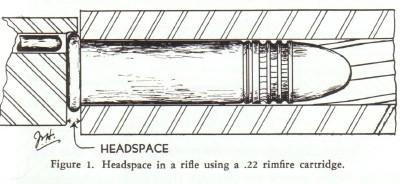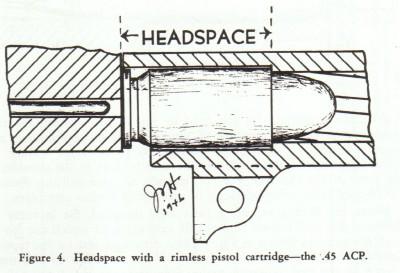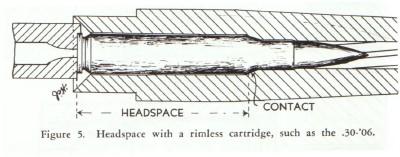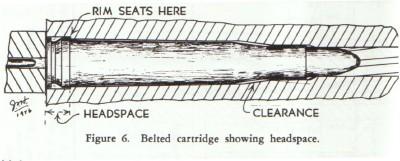I'll take a stab at it too. When you load any cartridge into a chamber, there is a minimum usable distance between the bolt face and the base of the cartridge which will reliably allow the bolt to close. -- Go Headspace Gage--. There is more importantly, a maximum safe distance between the bolt face and the base of the cartridge, beyond which the gun can be dangerous. -- No-Go Headspace Gage--. Some cartridges are held in position in the chamber by the shoulder of the cartridge, example; .30-06, some by a belt, example; .300 Win Mag, some by a rim, example; .30-.30, and some by the mouth of the case, example; .45 acp, but all have a safe headspace range which will allow the cartridge enough room to chamber reliably, but not enough room to be dangerous.
Summing up; a bolt or breechblock that will close on a Go Gage will accept all SAAMI std ammo for that cartridge. Good. Acceptable headspace. But... a bolt or breechblock that will also close on a No-Go Gage is deemed unsafe and should not be fired. Too much headspace.
It's a good system, and there are few exceptions (The Field Test Gage for some military weapons and cartridges is one). This isn't a rule, but the difference between a Go and a No-Go gage is just a few thousandths, like .004" to .006" depending on caliber and cartridge.
All cartridge firearms whether mass-produced or custom built have to fall into the prescribed headspace range for that cartridge. Custom builders in general will hold closer to the minimum headspace (Go Gage) for better brass life, possibly better accuracy, and just plain pride of workmanship.
Hope this is not too long-winded, and is understandable, Tom





